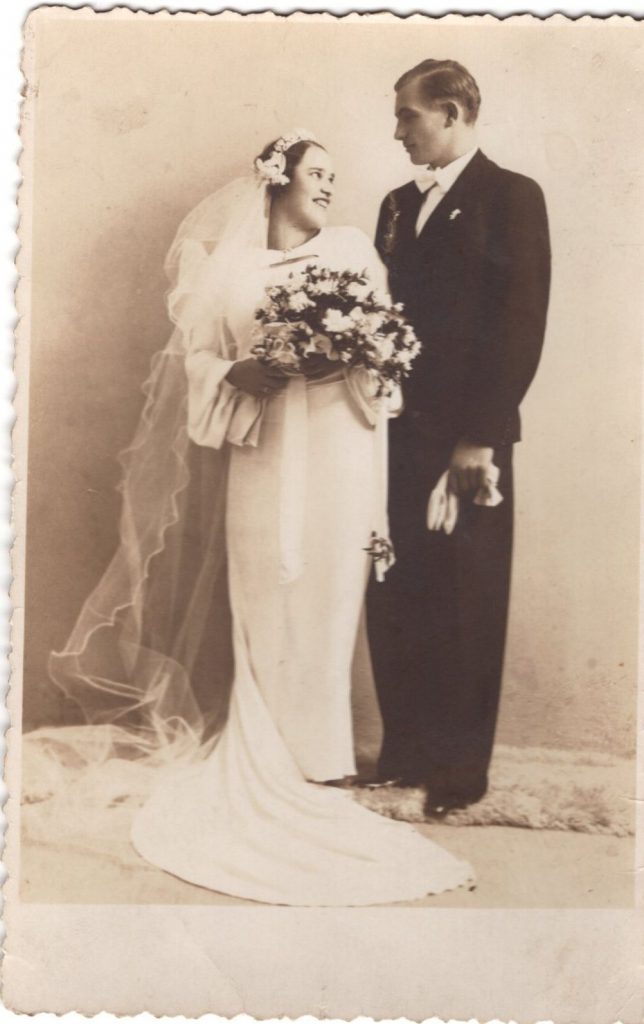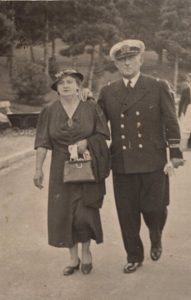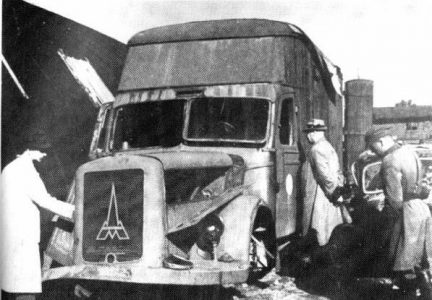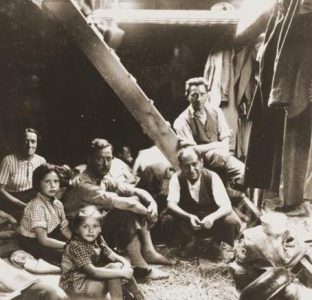By Robert Čoban
I met Ester Bajer two years ago on the terrace of the Old Palace at a reception organized by the Israeli Embassy in Belgrade on the occasion of the Israeli Independence Day. I was one of the many people who was captivated by the liveliness and energy of this elderly lady in her late seventies, so we all took photos with her. When she saw the photo, Marija Vasić, a woman from Novi Sad who has been researching the Nazi raids and the Holocaust in this part of the world, told me that Ester Bajer’s life story was made for a film. A few days before the state of emergency was introduced, I spoke with Esther about her incredible life.
While singing in the Ester Albahari Choir, a woman, who was a Sephardic Jew, met Aleksandar Bajer, a Protestant from Germany, whose grandfather came to Serbia to become a gardener at the Obrenović family’s court and summer houses.

“When my mother heard one day that, after the Germans entered Belgrade, her parents, who lived in Dorćol, in Dušanova Street, were taken to the Staro Sajmište concentration camp, she was determined to go to visit them, while heavily pregnant with me,” Ester begins her story.
Determined to find her parents, while being in the final stage of her pregnancy, she came to George Washington Street, where all Jews had to register first. As she was married to a German man, who was also a Protestant, they told her to go home but she persisted. In the end, they took her to the Staro Sajmište camp.
The systematic extermination of Jews in occupied Serbia took place in two phases. During the first phase, which lasted from July to November 1941, as part of retaliatory measures carried out by Wehrmacht forces, Jewish men were immediately shot.
In the second phase, between December 1941 and May 1942, women and children were interned in the Sajmište camp, from where they were transported to Jajinci by the notorious “soul-killers” (in German gaswagen, in English gas vans in which they would suffocate to death and their bodies would be thrown into a mass grave.
“Everything that happened in the camp caused my mother to go into premature labour and give birth to me, while she was seven months pregnant. I weighed only 900 grams at birth. My uncle was there, in the camp, as medical personnel. My mother, grandma and grandpa knew I would not have survived if I stayed in the camp so my uncle snuck me out in a canvas bag,” Ester says.
The baby, weighing less than a typical loaf of bread, was taken to the orphanage in Zvečanska Street and put in a shoebox padded with cotton. Since the Germans frequently stopped at the orphanage to check if there were any Jewish children there, the baby was given a Serbian name – Olgica.
A couple of days after baby Olgica was smuggled out of the camp, her parents and grandparents were loaded into a “soul killer” (see box below) where they were suffocated en route to the mass grave in Jajinci.
Little Olgica stayed at the orphanage in Zvečanska Street until the end of the war when her paternal grandfather, the captain of the Willem Bayer riverboat, who took part in rescuing the Jews from the Kladovo Transport (see box below), came to pick her up.
The story of Ester Bajer is a testimony of how life, like water, always finds its way through and if someone is born under a lucky star, even in a concentration camp, weighing only 900 grams, can live happily until very old age.
“In memory of my mother, I later changed my name to Ester and kept the surname Bajer, as a big thank you to my grandfather who raised me,” says Ester, who later moved to Bjelovar, where she married in 1960. After the divorce, she returned to Belgrade, worked as a cook on ships and travelled all over Europe. Although she was the granddaughter of a riverboat captain, she never learned to swim.

Ester is today an active member of the Jewish community in Belgrade. She travels to Belgrade Synagogue from Sremčica, where she lives, twice a week, to spend time with other members of the community. She is also a regular at all receptions organized by the Israeli Embassy and is very open about the recent conflicts in the Jewish community.
The story of Ester Bajer is a testimony of how life, like water, always finds its way through and if someone is born under a lucky star, even in a concentration camp, weighing only 900 grams, can live happily until very old age.
Horrendous death in soul-killers
The “soul-killer” in which Ester Bajer’s mother, grandmother and grandfather were killed was first brought from Berlin to Belgrade in February 1942 to take part in the mass extermination of Jews in Serbia. The decision to send this death truck was made by the head of the Security Police and the Security Service of the Third Reich, Reinhard Heydrich. Soul-killer was a five-tonne Zaurer truck that could take up to 50 people. The victims were suffocated in the hermetically sealed interior of the truck by exhaust fumes containing carbon monoxide. This was happening on the way to Jajinci, where mass graves had already been dug up. Witnesses talk about the horrible scenes where prisoners, who were supposed to take the corpses out of soul-killers in Jajinci, saw mothers and children, whole families, embraced in a hug as they were dying, which made it very difficult to separate them for burial later.
In the period from early April to late May 1942, about 8,000 Jews and 500 partisans were suffocated in these killer trucks in Belgrade. The victims were taken from the Sajmište and Banjica camps. After this mass destruction, General Lehr said that the Jewish issue was resolved in Serbia, so the soul-killers withdrew to Germany.

Our renowned novelist David Albahari writes about “soul-killers” in his novel “Gec i Majer”. Gec and Majer were real people. There isn’t much available information about them, except that they were SS soldiers who took Jews from the Staro Sajmište camp to their deaths every day. There are no photographs of them in the archives and nobody knows what they did before or after the war.
The haunted Kladovo Transport
Kladovo Transport was the term used for the transport of over 1,200 Jews who fled the territory of the Third Reich in 1939. They moved along the Danube from Vienna and Bratislava to the Black Sea and Palestine. Their journey was halted after less than a month (mid-December 1939) on the Yugoslav-Romanian border in Prahovo after Romanian authorities denied them the right to cross into their territory without possessing a Palestinian immigration certificate. Furthermore, the ice on the Danube River completely halted their voyage. Located in Kladovo for months, they were transferred by boat to Šabac in September 1940, where a small but respectable Jewish colony lived. The same ships that provided refuge to Jewish refugees on the Danube for months (“Tsar Dushan”, “Queen Maria” and “Tsar Nicholas II”) were used to transport German emigrants who were transferred from Bessarabia, Bukovina and Dobrudža, after the German-Soviet division of spheres of interest in August 1939, to the territory of the Third Reich.

Just before the German attack on Yugoslavia, about two hundred young people from the Kladovo Transport were given the required documentation and were transferred to Palestine via Greece. The majority, who stayed in Šabac during the occupation, was imprisoned on July 15 in the newly established “Jewish camp in Šabac”. That was the first group of Jews to be interned en masse on the territory of Serbia. The men from the Kladovo Transport were shot as part of General Beme’s punitive measures on October 12 and 13, 1941, near the village of Zasavica, close to Šabac, while women and children were transferred to the Staro Sajmište camp and executed there during the spring of 1942. The remains of several hundred Jews from the Kladovo Transport killed near Zasavica were not burned in the Operation Sonderkommando 1005. They were exhumed after the war and in 1959, transferred to the ossuary at the Sephardic Jewish cemetery in Belgrade.